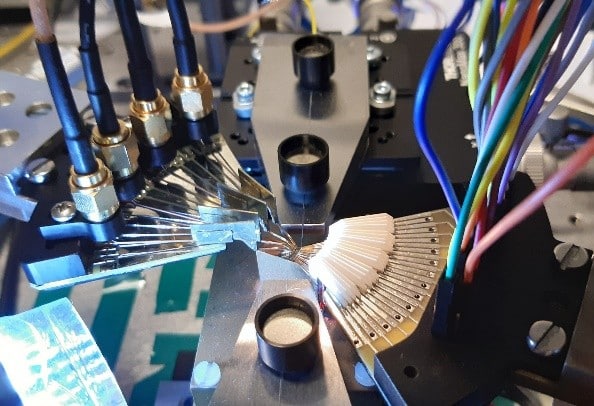Research Proyect

PICSAR: Photonic Integrated Circuits for gas sensing, ranging, and quantum random number generation
Ref: Grant PID2021-1234590B-C21 funded by MCIN/ AEI /10.13039/501100011033 and ERDF “A way of making
Principal Investigators:
Ignacio Esquivias Moscardó
Antonio Pérez Serrano
Coordinated project with Instituto de Física de Cantabria (IFCA), Santander, Spain
From 1/9/2022 to 31/8/2025
The overall objective of the project was the development of integrated photonic circuits (PICs) for gas sensing, distance measurement, and quantum applications. Four InP-based PICs, each with a set of devices and subsystems, were simulated, designed, sent for manufacturing, and characterized. The main achievements of the project have been: Novel integrated optical frequency comb (OFC) generators were studied, proposed, manufactured, and characterized: i) based on gain switching distributed feedback lasers; ii) based on gain switching ring lasers; iii) based on mode-locked lasers. Excellent experimental results were obtained in all three cases. The generation of dual combs by gain switching using two OFCs generated by ring lasers and optical injection was also demonstrated for the first time in a PIC. Furthermore, the generation of OFCs by Q-switching using an intracavity modulator has been theoretically demonstrated, and further work is in progress to implement it on a PIC.
A new technique for generating low-repetition-frequency OFCs has been developed using phase-modulated densification with binary pseudorandom sequences. Several novel systems for dual-comb spectroscopy have been demonstrated: i) a low-cost system using low-cost sources as pulse generators and a Software-Defined Radio device as a digitizer; ii) a system based on the densification technique with the advantage of improved spectral resolution; iii) a system that, for the first time, employs a single gain-switched slave laser and time-division multiplexing.
Several quantum random number generation systems have been proposed and characterized theoretically and experimentally: i) based on the random excitation of the linearly polarized modes of a vertical cavity laser system (VCSEL) operating by gain switching; ii) based on the noise in the optical phase of gain-switched single-mode semiconductor lasers. Artificial intelligence-based tools have been developed to evaluate the randomness of quantum random number generators.




